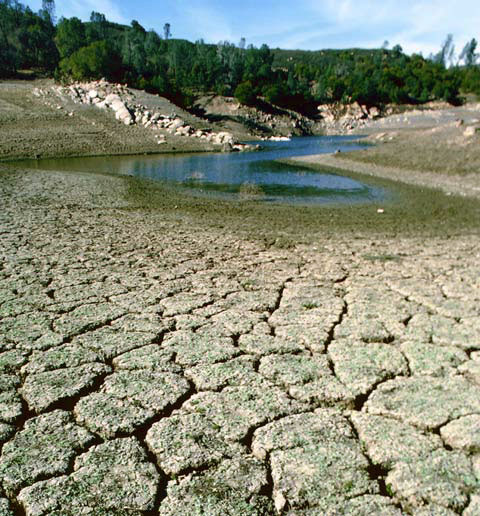 1. List the main reasons for water scarcity.
1. List the main reasons for water scarcity.A: The main reason for water scarcity is that many places, such as hot deserts have very low rainfall.
2. What is a drought? What type of hardships do you think that a drought could cause if you were living in a village in a poor country such as Etophia?
A: A drought is a period of below average precipitation. This can be vary in length.
I think one type of hardship is El Nino, which is when warming develops every three to five years.
3. How does land degradation affect the supply of fresh water?
A: It effects the supply of fresh water because when it precipitates, it doesn't go into the ground and absorb it which goes into the sand filter.
4. a) What is El Nino?
A: El Nino is refers to a warming that develops every three to five years in the pacific ocean off the coast of Peru.
b) Why does El Nino often cause drought in Australia?
A: El Nino causes drought in Australia because the moist easternly trade winds blow to the Pacific Ocean, blowing it the oppisite direction which prevents Australia to have warm moist air.
5. Observe the map showing the global effects of El Nino in 1982-83.
a) What effects does El Nino have on availability of fresh water?
A: El Nino effects the availability of fresh water because there can be long periods of rain which causes flooding, very heavy storms and tidal waves. Then the water becomes heavily polluted during a flood and there are very little clean wtaer is available.
b) Name the countries and describe the problems that arose from decreased rainfall caused by El Nino?
A: Africa- reduced corn crop in Sub Saharan region.
China- Agriculture land under the threat from drought in the northern regions and flooding in Southern regions.
Indonesia- High air pollution levels, following forest fires.
Philippines- Lower rice harvest following drought.
United States- Rainfall above normal in North-western states (double the historical averages)
Colombia- Fishing operators affected by lower catch (down 20%.)
Papua New Guinea- Drought related failure of food crops, leading to femine conditions requiring food aid.
Australia- What exports threatened by drought conditions across grain-growing areas, particularly New South Wles.
Peru- Flooding (also in Chile)
- Fishing operators affected by lower catch asa anchovy and Pacific sardine move offshore to escape warm currents (5C above normal temperatures)



